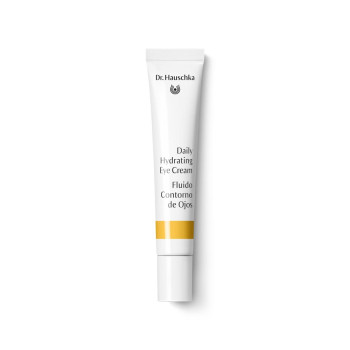
Pineapple
Synonyms: None known
Scientific Name: Ananas comosus (L.) Merr., Ananas sativus L.
Family: Bromeliaceae (Pineapple Family)
Habitat
The pineapple originally came from Brazil and Paraguay. Today it is cultivated throughout most of the tropics and parts of the subtropics, particularly in Thailand, the Philippines, Hawaii, Brazil, Mexico, India, Nigeria and the Ivory Coast.
Constituents
Bromelain, sugar, fruit acids. In small amounts carotene, B vitamins and vitamin C.
Description
Pineapple: to us this usually means the aromatic, pine-cone shaped fruit with a crown of stiff prickly leaves and sweet-tasting flesh. But what does the plant look like? The tropical, perennial pineapple is a member of the family Bromeliaceae. The bush-like plant grows to a height of about one metre. The toothed - and therefore rather inhospitable - leaves grow directly from the ground in the form of a rosette and can be as much as a metre long. A bit like a maxi-version of the crown of leaves that tops the pineapple fruit. When the plant is one year old an inflorescence grows from the centre of the rosette for the first time, the thick stem about 30 cm long bearing closely packed white or blue to purple flowers. Without pollination the flowers develop into seedless berries which fuse with the stem of the inflorescence to form the fleshy pineapple fruit. Each scale on the fruit's skin indicates a flower, the last remains of which we find when we peel the fruit. These are the hardened structures a few millimetres in size which lie in the fruit flesh immediately beneath the skin. The woody circular core of the fruit, on the other hand, is the stem of the inflorescence.
Like all bromeliads the pineapple plant obtains its nutrition from the leaves with the help of special moisture-absorbing scales (trichomes) which take up water and nutrients. The interior of the leaf rosette acts as a natural water reservoir. In some bromeliad species this mini-pond has developed into a small biotope with its own animal species, insects and even frogs. The roots serve mainly to anchor the plant in the ground.
Interesting Facts
The native inhabitants of Paraguay called the pineapple nana meant (= delicious fruit), giving rise to the Latin name Ananas. The English name pineapple and the Spanish piña describe the fruit's resemblance to a pine cone. In the Philippines the pineapple is also known as the fruit with a thousand eyes.
It was Christopher Columbus who brought the pineapple to Europe. In 1493 the friendly inhabitants of the Antilles island of Guadeloupe welcomed the foreign traveller with this exotic fruit. Columbus was so enamored with its taste that he took it home with him. However, it was not until the 19th century that the plant was successfully cultivated in greenhouses.
The protein-digesting bromelain also has culinary uses. Cooking meat with fresh pineapple is said to make it more tender. Anyone travelling in the tropics should look out for the small second or third harvest pineapples. They are considerably sweeter and more aromatic than the exported fruits and are only to be found in the local markets. Damaged or over-ripe pineapples are used to make pineapple vinegar in the countries of origin.
The leaves of the pineapple species Ananas lucidus are the source of a very fine, beige-white fibre, which is as soft and lustrous as hair and is used to make fine fabrics such as lace veils. Obtaining the fibers is a painstaking process. The two-year-old leaves are cut and the fibres combed out by hand using potsherds or coconut shells. The threads made by twisting the fibres are so delicate that they tear easily during weaving. Pineapple fabric or batiste is therefore extremely expensive. Pineapple weaving had its heyday in the 19th century on the Philippines. The products were in demand throughout the world. However, cotton fabrics, which were considerably easier to produce and therefore less expensive, eventually ousted the expensive pineapple cloth. Today some cooperation ventures in collaboration with development aid projects are trying to revive this traditional craft.
With a little luck you can grow a pineapple plant at home from the leaf crown of a fresh fruit. To do this, cut off the crown about 3/8/1 cm below the base of the leaves so that the embryonic roots are preserved. Leave the cut surface to dry for 24 hours and then place on a mixture composed of a lot of sand and a little garden peat. Cover with a sheet of plastic initially and set in a warm place with plenty of light. This pineapple will not flower, however.
The plant from another perspective
The pineapple is a curious plant. For a long time scientists did not understand how its fruit is formed. The berries fused with the stem of the inflorescence to form the pineapple fruit sit in the middle of the scratchy leaf rosette almost like a fat tuber. A crown of leaves tops the fruit like a feathered hat. Its weight and its growth close to the ground give the pineapple fruit an earthy, root-like quality. The embryonic roots just below the crown of leaves further support this image. However, our fruit is not only earth-like. The prickly, unfriendly exterior conceals a sweet side which has something of a flower-like quality. With the fused flower stem, the middle part of the plant has become integrated in the pineapple fruit, further emphasized by the leafy crown. The pineapple is thus a fruit which combines root-like, leaf-like and flower-like qualities.
In anthroposophy the plant root is seen as related to our sensory system, the middle, leafy part of the plant to the body's rhythmic processes such as breathing and circulation and the flower to the metabolic processes. The three-faceted pineapple fruit thus has connections both to the eye (sense organ) and to metabolic processes.
The plant in our products
Pineapple is found in:

